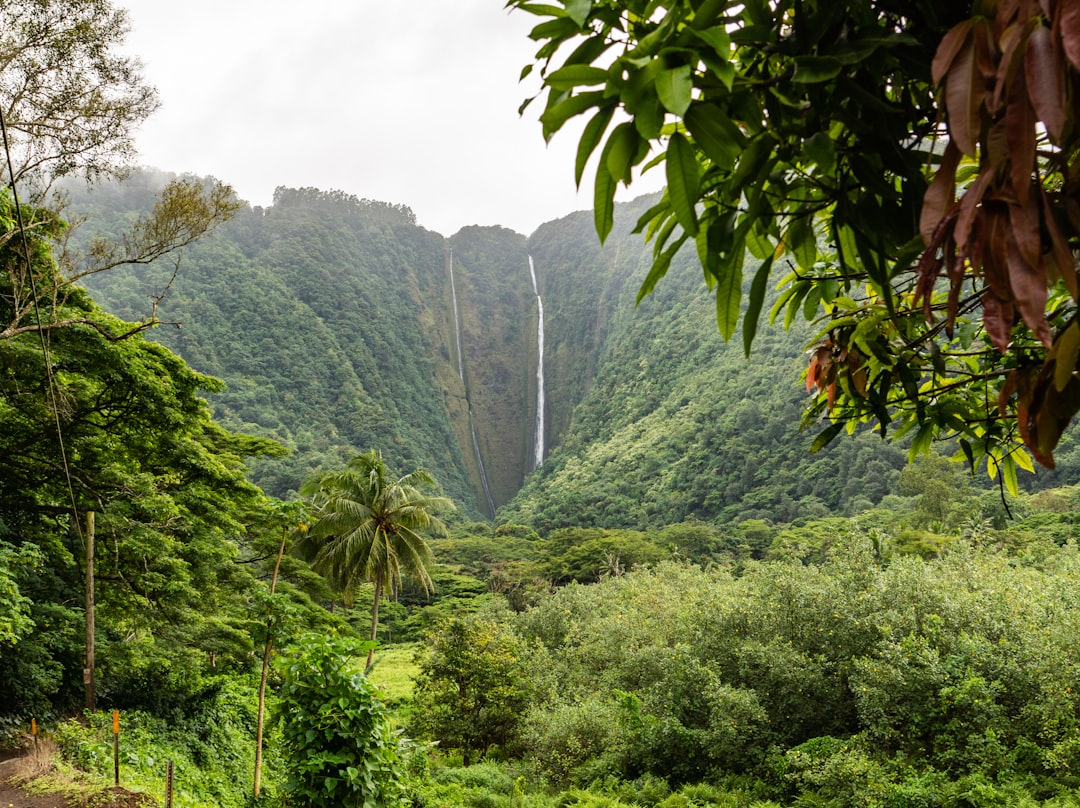Greening Hawaii: Boosting Your SEO with Targeted Eco-Friendly Practices for Sustainable Landscaping Services
Eco-friendly landscaping practices involve techniques that minimize negative impacts on the environment while creating beautiful and functional outdoor spaces. These practices include using organic fertilizers, conserving water, incorporating native plants, and reducing carbon footprint.
One example of a sustainable landscaping technique is the use of organic fertilizers instead of chemical fertilizers. Organic fertilizers are made from natural materials such as compost or animal manure, which provide essential nutrients to plants without harming the environment. They also improve soil health and promote beneficial microorganisms.
Another example is water conservation techniques, which aim to minimize water usage in landscaping. This can be achieved through the use of drip irrigation systems, rainwater harvesting, and proper watering schedules. By conserving water, sustainable landscaping services not only reduce their impact on local water resources but also save money on water bills.
Benefits of Green Landscaping for Your Business
Implementing sustainable landscaping practices can bring numerous benefits to your business or property.
One significant advantage is improved brand image and reputation. In today’s environmentally conscious society, businesses that prioritize sustainability are viewed more favorably by customers. By showcasing your commitment to eco-friendly practices through sustainable landscaping, you can attract environmentally conscious customers and enhance your brand’s reputation as a responsible and ethical business.
Another benefit is cost savings on water and energy bills. Sustainable landscaping practices, such as water conservation techniques and the use of native plants, can significantly reduce water consumption and the need for excessive energy use. This can result in substantial savings on utility bills over time.
Additionally, sustainable landscaping can increase property value. A well-designed and maintained landscape that incorporates eco-friendly practices can significantly enhance the aesthetic appeal of a property. This can attract potential buyers or tenants and increase the overall value of the property.
The Importance of Targeted SEO for Sustainable Landscaping Services
Targeted SEO (Search Engine Optimization) is crucial for sustainable landscaping businesses to improve their online visibility and attract potential customers.
Targeted SEO involves optimizing your website and online content to rank higher in search engine results for specific keywords related to sustainable landscaping services. By appearing on the first page of search engine results, you increase the chances of attracting organic traffic to your website and generating leads.
Having a strong online presence is essential for sustainable landscaping businesses because many customers now search for services online before making a decision. By implementing targeted SEO strategies, you can ensure that your business appears in relevant search results when potential customers are looking for sustainable landscaping services in your area.
To improve SEO for sustainable landscaping services, it is important to conduct keyword research to identify relevant keywords that potential customers are using in their searches. Incorporate these keywords naturally into your website content, including titles, headings, and meta descriptions. Additionally, create high-quality content that provides valuable information about sustainable landscaping practices to establish yourself as an authority in the industry.
Using Local and Native Plants in Your Landscape Design
| Metrics | Description |
|---|---|
| Organic Traffic | The number of visitors to your website from search engines like Google, Bing, and Yahoo. |
| Keyword Rankings | The position of your website in search engine results pages (SERPs) for specific keywords related to sustainable landscaping services. |
| Conversion Rate | The percentage of website visitors who take a desired action, such as filling out a contact form or making a purchase. |
| Brand Awareness | The level of recognition and familiarity that potential customers have with your sustainable landscaping services brand. |
| Competitive Advantage | The ability to outrank and outperform competitors in search engine results pages for sustainable landscaping services related keywords. |
Using local and native plants in your landscape design is not only environmentally friendly but also offers numerous benefits for your outdoor space.
One of the main benefits of using local and native plants is their adaptability to the local climate and soil conditions. These plants have evolved to thrive in specific regions, making them more resistant to pests, diseases, and extreme weather conditions. By using local and native plants, you can reduce the need for excessive watering, fertilizers, and pesticides, resulting in a healthier and more sustainable landscape.
Using local and native plants also promotes biodiversity. Native plants provide habitat and food sources for local wildlife, including birds, butterflies, and bees. By incorporating these plants into your landscape design, you can create a thriving ecosystem that supports a variety of species.
When choosing local and native plants for your landscape design, consider factors such as sunlight requirements, soil type, and water availability. Research the native plants that are suitable for your region and incorporate them into your design to create a beautiful and sustainable outdoor space.
Implementing Water Conservation Techniques in Your Landscaping
Water conservation techniques are essential for sustainable landscaping services to minimize water usage and protect this valuable resource.
One water conservation technique is the use of drip irrigation systems. Drip irrigation delivers water directly to the roots of plants through a network of tubes or pipes with small holes or emitters. This method reduces water waste by delivering water precisely where it is needed, minimizing evaporation and runoff.
Another technique is rainwater harvesting. Rainwater harvesting involves collecting rainwater from roofs or other surfaces and storing it for later use in irrigation. This technique not only reduces reliance on municipal water sources but also helps prevent stormwater runoff, which can contribute to water pollution.
Proper watering schedules are also crucial for water conservation. Overwatering can lead to water waste and promote the growth of weeds and diseases. By implementing efficient watering schedules based on the specific needs of different plants, sustainable landscaping services can minimize water usage while maintaining healthy and vibrant landscapes.
Choosing Sustainable Irrigation Systems for Your Landscape

Choosing sustainable irrigation systems is another important aspect of eco-friendly landscaping practices.
One example of a sustainable irrigation system is the use of smart irrigation controllers. These controllers use weather data and soil moisture sensors to adjust watering schedules based on the specific needs of plants. By optimizing watering schedules, smart irrigation controllers can significantly reduce water waste and ensure that plants receive the right amount of water at the right time.
Another sustainable irrigation system is the use of low-flow sprinklers or micro-irrigation systems. These systems deliver water directly to the root zone of plants, minimizing evaporation and runoff. They are particularly effective for watering small areas or individual plants.
By choosing sustainable irrigation systems, sustainable landscaping services can minimize water waste, reduce water bills, and promote healthier plant growth.
Composting and Recycling for a Greener Landscape
Composting and recycling are essential practices in sustainable landscaping that promote a greener landscape and reduce waste.
Composting involves the decomposition of organic materials, such as food scraps, yard waste, and leaves, into nutrient-rich compost. This compost can then be used as a natural fertilizer in landscaping. By composting organic materials instead of sending them to landfills, sustainable landscaping services can reduce waste and improve soil health.
Recycling involves the collection and processing of materials such as plastic, glass, and paper to be reused in the manufacturing of new products. In landscaping, recycling can involve using recycled materials for hardscaping elements such as pathways or retaining walls. By incorporating recycled materials into landscape design, sustainable landscaping services can reduce the demand for new resources and minimize waste.
By implementing composting and recycling practices, sustainable landscaping services can contribute to a greener landscape while reducing their environmental impact.
Reducing Carbon Footprint with Sustainable Landscaping Practices
Reducing carbon footprint is an important goal for sustainable landscaping services to minimize their contribution to climate change.
Carbon footprint refers to the total amount of greenhouse gas emissions, particularly carbon dioxide, produced by an individual, organization, or activity. Sustainable landscaping practices can help reduce carbon footprint by minimizing energy use, promoting biodiversity, and sequestering carbon in the soil.
One example of a sustainable landscaping practice that reduces carbon footprint is the use of electric or battery-powered equipment instead of gas-powered equipment. Electric equipment produces zero emissions during operation, reducing the carbon footprint associated with landscaping activities.
Promoting biodiversity through the use of native plants also helps reduce carbon footprint. Native plants have the ability to sequester carbon dioxide from the atmosphere and store it in their biomass and soil. By incorporating native plants into landscape design, sustainable landscaping services can contribute to carbon sequestration and help mitigate climate change.
Promoting Sustainable Landscaping Services for a Greener Future
In conclusion, sustainable landscaping services play a crucial role in promoting eco-friendly practices and creating a greener future. By implementing techniques such as using local and native plants, conserving water, choosing sustainable irrigation systems, composting and recycling, and reducing carbon footprint, these services can minimize negative impacts on the environment while providing numerous benefits for businesses and property owners.
It is important to prioritize targeted SEO to improve online visibility and attract potential customers. By incorporating relevant keywords into website content and creating high-quality content that provides valuable information about sustainable landscaping practices, businesses can enhance their online presence and attract organic traffic.
By promoting sustainable landscaping services, businesses can contribute to a greener future and inspire others to adopt eco-friendly practices. With increased awareness and demand for sustainable landscaping services, we can create outdoor spaces that not only enhance the beauty of our surroundings but also protect and preserve the environment for future generations.
If you’re interested in learning more about sustainable practices and how they can be applied to landscaping services in Hawaii, you might find the article “SEO for Hawaii Sustainable Landscaping Services” from Shane Perry Marketing informative. This article explores the importance of search engine optimization (SEO) in promoting eco-friendly landscaping practices and highlights the benefits it can bring to businesses in Hawaii. To read the full article, click here.
FAQs
What is sustainable landscaping?
Sustainable landscaping is the practice of designing, installing, and maintaining landscapes in an environmentally responsible manner. It involves using native plants, conserving water, reducing waste, and minimizing the use of harmful chemicals.
Why is sustainable landscaping important?
Sustainable landscaping is important because it helps to conserve natural resources, reduce pollution, and protect the environment. It also helps to create healthy and beautiful outdoor spaces that are safe for people and wildlife.
What are some eco-friendly practices for sustainable landscaping?
Some eco-friendly practices for sustainable landscaping include using native plants, conserving water, reducing waste, composting, using organic fertilizers, and minimizing the use of pesticides and herbicides.
What is SEO?
SEO stands for Search Engine Optimization. It is the practice of optimizing a website or web page to rank higher in search engine results pages (SERPs) for specific keywords or phrases.
How can SEO help Hawaii sustainable landscaping services?
SEO can help Hawaii sustainable landscaping services by increasing their online visibility and driving more traffic to their website. This can lead to more leads, sales, and revenue for the business. By targeting eco-friendly practices in their SEO strategy, they can also attract customers who are interested in sustainable landscaping services.
about author

Shane Perry Marketing. Taking your Hawaii business to the next level with online marketing.
subscribe to newsletter
Subscribe and get monthly digital marketing updates.










